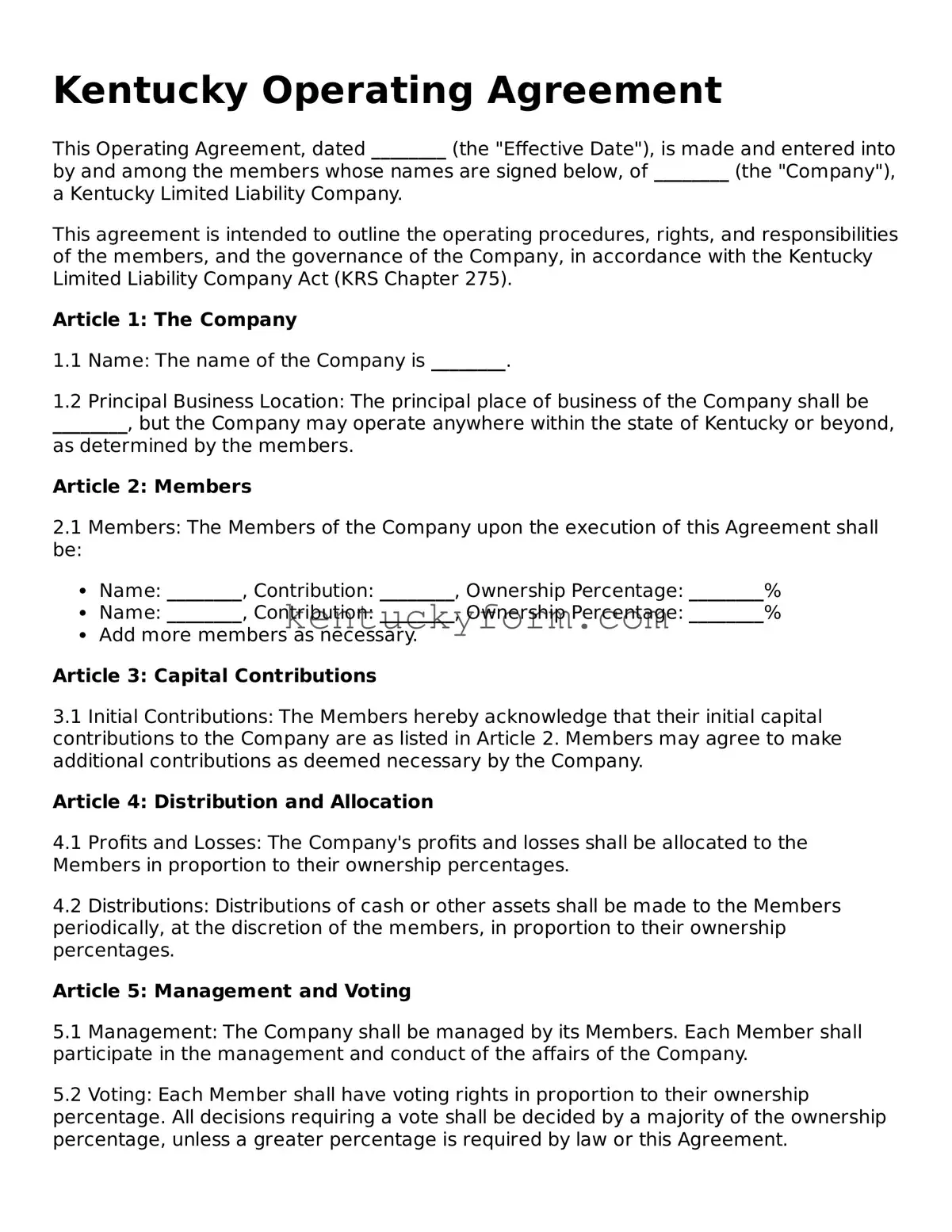An Operating Agreement, specifically in contexts like Kentucky, is tailored for Limited Liability Companies (LLCs) to outline the operational frameworks and member agreements. Similar to this, a Partnership Agreement serves businesses formed by two or more individuals who intend to manage and operate a business together. These documents share similarities in specifying the nature of the business, distribution of profits and losses, and the roles and responsibilities of the parties involved. However, a Partnership base typically does not provide the same level of personal liability protection to its members as an LLC does through its Operating Agreement.
Another document akin to the Operating Agreement is the Shareholders' Agreement utilized in corporations. While an Operating Agreement focuses on the member roles, responsibilities, and distributions within an LLC, a Shareholders' Agreement outlines the rights and responsibilities of shareholders within a corporation. It includes provisions for protecting minority shareholders, managing share transfers, and detailing how decisions are made, paralleling the Operating Agreement’s role in managing the internal operations of an entity.
The Bylaws of a corporation also bear similarities to an Operating Agreement. Bylaws serve as an internal document that guides the corporation's operational aspects, management decisions, and how corporate officers are elected, akin to the Operational Agreement’s guidance in an LLC. Both documents solidify the procedural frameworks within which decisions are made, though Bylaws cater specifically to corporations, detailing broader organizational governance than LLCs typically require.
A Buy-Sell Agreement, often part of broader Operating Agreements or standalone in partnerships and corporations, mirrors the foresight and planning evident in an Operating Agreement. It outlines what happens if an owner decides to sell their stake, becomes incapacitated, or dies, ensuring the business continues smoothly. This proactive planning is critical in both types of documents for the stability and longevity of the business entity.
Employee Handbooks, while not forming the foundation of a business's legal structure, intersect with Operating Agreements on the point of operational guidelines and conduct expectations. Both documents contribute to setting the tone and procedures within a business, although Employee Handbooks focus more on employee expectations, benefits, and company culture, serving a wider audience within the company.
A Non-Disclosure Agreement (NDA) often accompanies or is embedded within Operating Agreements in scenarios where confidentiality is critical. NDAs protect sensitive information, similar to how Operating Agreements may include confidentiality clauses to safeguard the company’s proprietary information and trade secrets among its members.
Similarly, a Non-Compete Agreement, which may be a segment of an Operating Agreement or a separate document, denotes conditions under which members or employees agree not to start or join a competing business within a certain timeframe or geographic area. This parallels the protective and precautionary nature of Operating Agreements, emphasizing the safeguarding of the business's interests and market position.
A Service Agreement, detailing the terms of service between a provider and the client, shares the contractual essence with Operating Agreements, despite serving different parties. While Operating Agreements lay out the internal workings and agreements between members of an LLC, Service Agreements formalize the transactional relationship between a business and its clients, focusing on the provision of services.
Lastly, an Investment Agreement, which outlines the terms and conditions of an investment within a company, resonates with the financial considerations detailed in an Operating Agreement. Both documents deal with capital contributions, financial arrangements, and the allocation of profits and losses. However, Investment Agreements specifically focus on the relationship between investors and the business entity, detailing the expectations and returns on investment.
Each of these documents, while tailored to different aspects of business and legal relationships, parallels the Kentucky Operating Agreement in its fundamental goal: to clearly define agreements, roles, responsibilities, and the operational blueprint of a business arrangement, ensuring a cohesive understanding and smooth operation among its participants.
